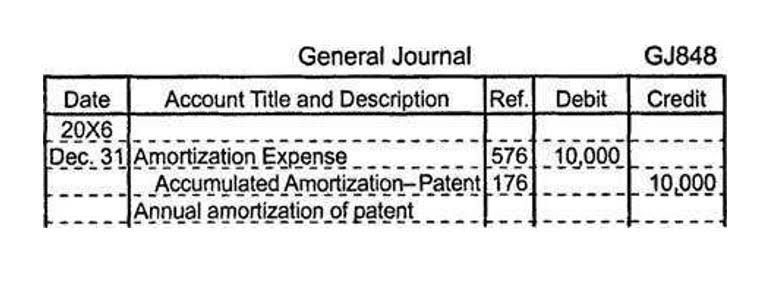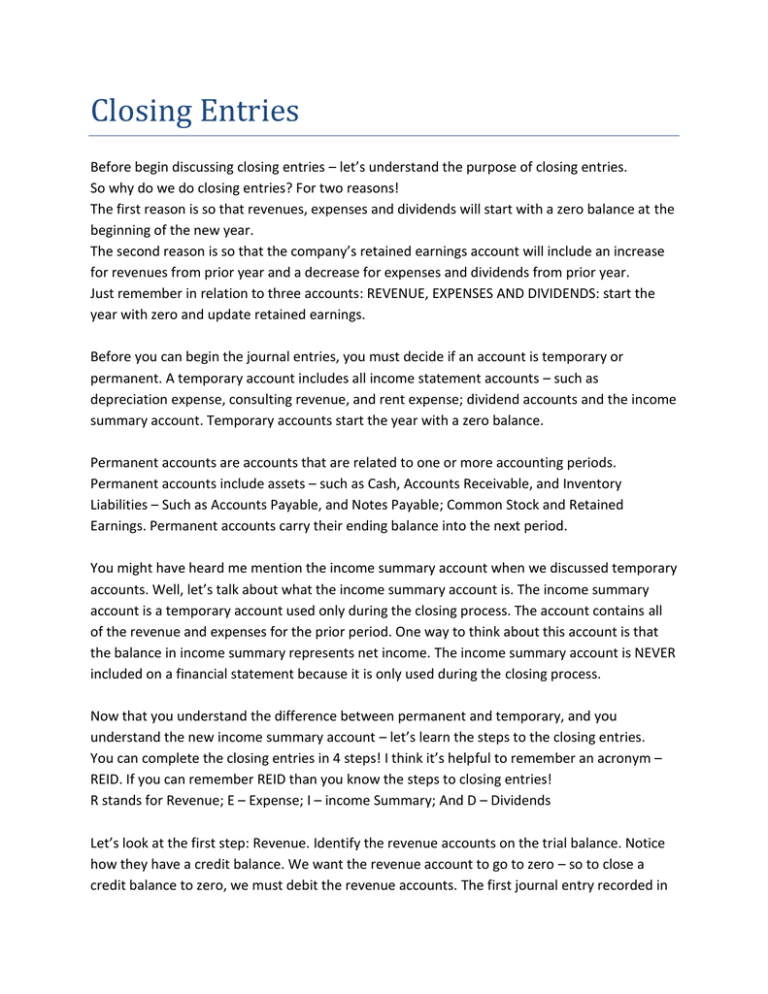The balances from these temporary accounts have been transferred to the permanent account, retained earnings. This process ensures that your temporary accounts are properly closed out sequentially, and the relevant balances are transferred to the income summary and ultimately to the retained earnings account. Closing entries are a fundamental part of accounting, essential for resetting temporary accounts and ensuring accurate financial records for the next period. This process highlights a company’s financial performance and position. In this guide, we delve into what closing entries are, including examples, the process of journalizing and posting them, and their significance in financial management.
Closing Journal Entries Process
- The goal is to make the posted balance of the retained earnings account match what we reported on the statement of retained earnings and start the next period with a zero balance for all temporary accounts.
- As the drawings account is a contra equity account and not an expense account, it is closed to the capital account and not the income summary or retained earnings account.
- Well, dividends are not part of the income statement because they are not considered an operating expense.
- For example, in the case of a company permanent accounts are retained earnings account, and in case of a firm or a sole proprietorship, owner’s capital account absorbs the balances of temporary accounts.
- The next step is to repeat the same process for your business’s expenses.
The purpose of closing entries is to merge your accounts so you can determine your retained earnings. Retained earnings represent the amount your business owns after paying expenses and dividends for a specific time period. In a sole proprietorship, a drawing account is maintained to record all withdrawals made by the owner. In a partnership, a drawing account is maintained for each partner.
Closing Entries as Part of the Accounting Cycle
Let’s explore each entry in more detail using Printing Plus’sinformation from Analyzing and Recording Transactions and The Adjustment Process as our example. The Printing Plusadjusted trial balance for January 31, 2019, is presented inFigure 5.4. It is the end of the year,December 31, 2018, and you are reviewing your financials for theentire year. You see that you earned $120,000 this year in revenueand had expenses for rent, electricity, cable, internet, gas, andfood that totaled $70,000. The year-end closing is the process of closing the books for the year. This involved reviewing, reconciling, and making sure that all of the details in the ledger add up.
Closing Entry in Accounting: Definition, Example, and Best Practices
Theclosing entry will credit Dividends and debit RetainedEarnings. Notice that the balances in the expense accounts are now zeroand are ready to accumulate expenses in the next period. The IncomeSummary account has a new credit balance of $4,665, which is thedifference between revenues and expenses (Figure5.5).
In some cases, accounting software might automatically handle the transfer of balances to an income summary account, once the user closes the accounting period. The entries take place “behind the scenes,” often with no income summary account showing in the chart of accounts or other transaction records. The balance sheet’s assets, liabilities, and owner’s equity accounts, however, are not closed. xero community 2 million subscribers These permanent accounts and their ending balances act as the beginning balances for the next accounting period. Temporary accounts differ from permanent accounts, which do not need to be opened and closed each period as they show the ongoing financial position of a business. Temporary accounts can be found on the income statement, while permanent accounts are located on the balance sheet.
Close all expense and loss accounts
As the drawings account is a contra equity account and not an expense account, it is closed to the capital account and not the income summary or retained earnings account. All expense accounts are then closed to the income summary account by crediting the expense accounts and debiting income summary. The four-step method described above works well because it provides a clear audit trail. For smaller businesses, it might make sense to bypass the income summary account and instead close temporary entries directly to the retained earnings account. Temporary accounts are the type of accounts that must be opened and closed during these reporting cycles.
Income summary effectively collects NI for the period and distributes the amount to be retained into retained earnings. Balances from temporary accounts are shifted to the income summary account first to leave an audit trail for accountants to follow. Income summary is a holding account used to aggregate all income accounts except for dividend expenses. It’s not reported on any financial statements because it’s only used during the closing process and the account balance is zero at the end of the closing process. The net income (NI) is moved into retained earnings on the balance sheet as part of the closing entry process.
Understanding the accounting cycle and preparing trial balancesis a practice valued internationally. The Philippines Center forEntrepreneurship and the government of the Philippines hold regularseminars going over this cycle with small business owners. They arealso transparent with their internal trial balances in several keygovernment offices.
Another essential component of the Highradius suite is the Journal Entry Management module. This module automates the creation and management of journal entries, ensuring consistency and accuracy in your financial statements. Organizations can achieve up to 95% journal posting automation with a pre-filled template, reducing errors and discrepancies and providing a reliable view of financial data. Closing entries are crucial for maintaining accurate financial records. HighRadius has a comprehensive Record to Report suite that revolutionizes your accounting processes, making them more efficient and accurate. At the core of this suite is the Financial Close Management solution, which simplifies and accelerates financial close activities, ensuring compliance and reducing errors.
For corporations, Income Summary is closed entirely to “Retained Earnings”. As you will see later, Income Summary is eventually closed to capital. Notice how only the balance in retained earnings has changed and it now matches what was reported as ending retained earnings in the statement of retained earnings and the balance sheet.



